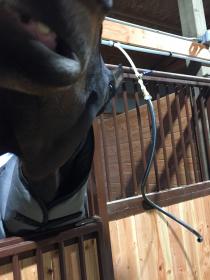Hello! I’m relatively new to COTH but have been working on a new farm and wouldn’t have been able to do it without the input from all of you! From arena construction to paddock footing to barn construction, I have found these forums to be such a wealth of information and so first I wanted to say THANK YOU!
The reason for my first post is that I’m a little stuck on figuring out how to supply water to our stalls (just about to start barn construction). The rocky location of the barn prevents us from digging down deep enough to install Nelson automatic (heated) waters.
Any tips/recommendations for installing a PVC pipe system that runs along the top of stalls, delivering water to each stall individually (I hate long hoses!)? I’m considering doing this but worried about freezing (where we live we get a few weeks of single digits to low teens; occasionally dipping into the negatives at night). Also, would insulated buckets/bucket cozies prevent water from freezing at these temperatures or would heated buckets be necessary? I work full time and am trying to find ways to minimize barn chore time. Thank you so much!

 and my first year owning a commercial stable we had burst PVC all over the place.
and my first year owning a commercial stable we had burst PVC all over the place.
